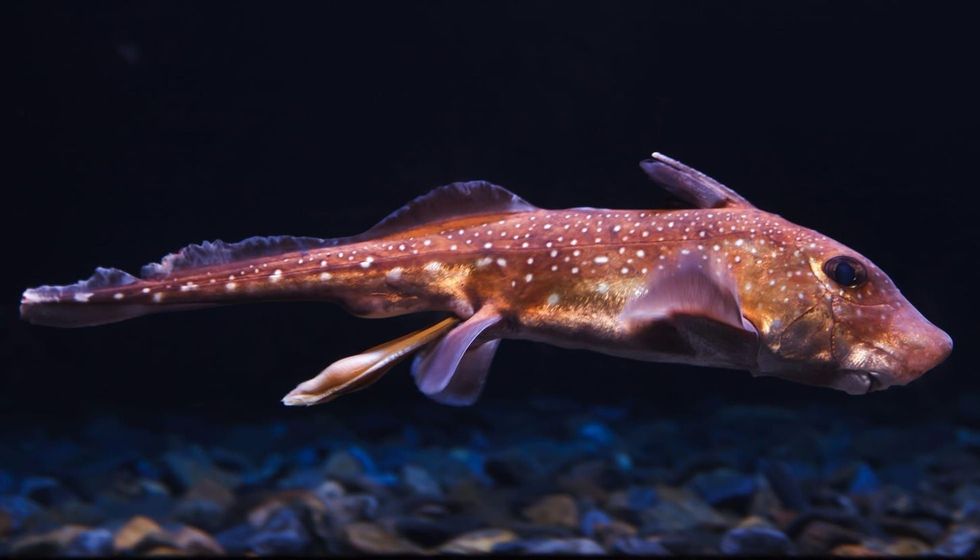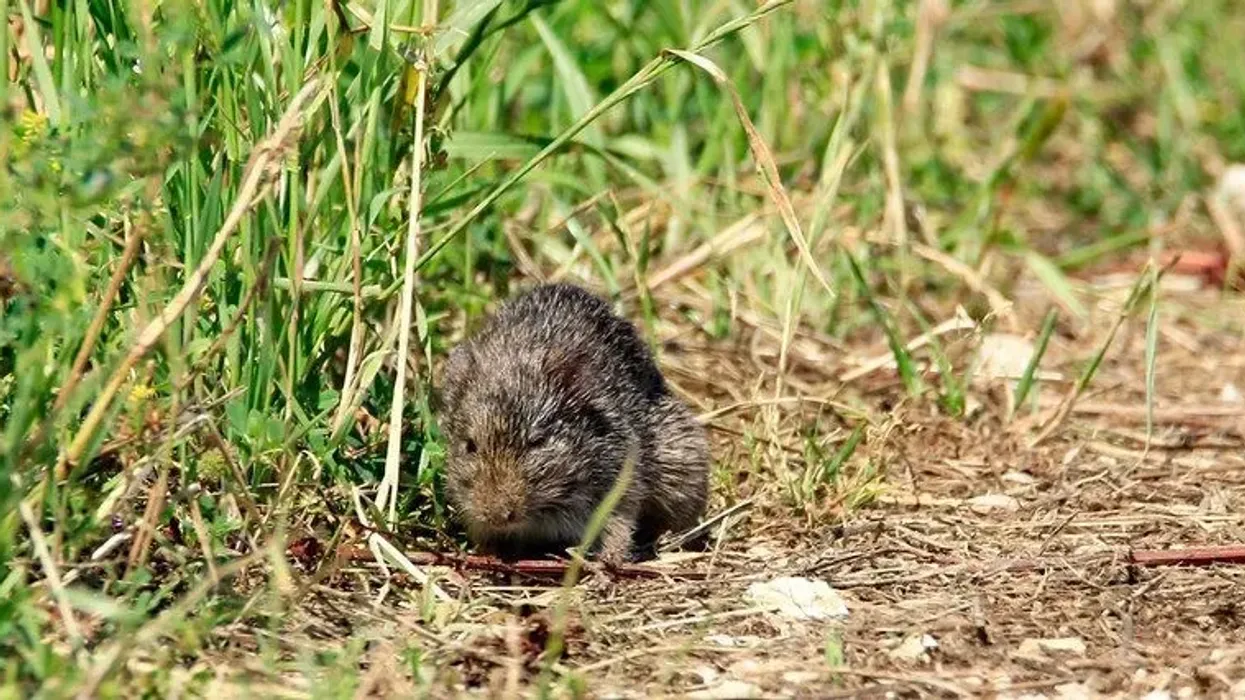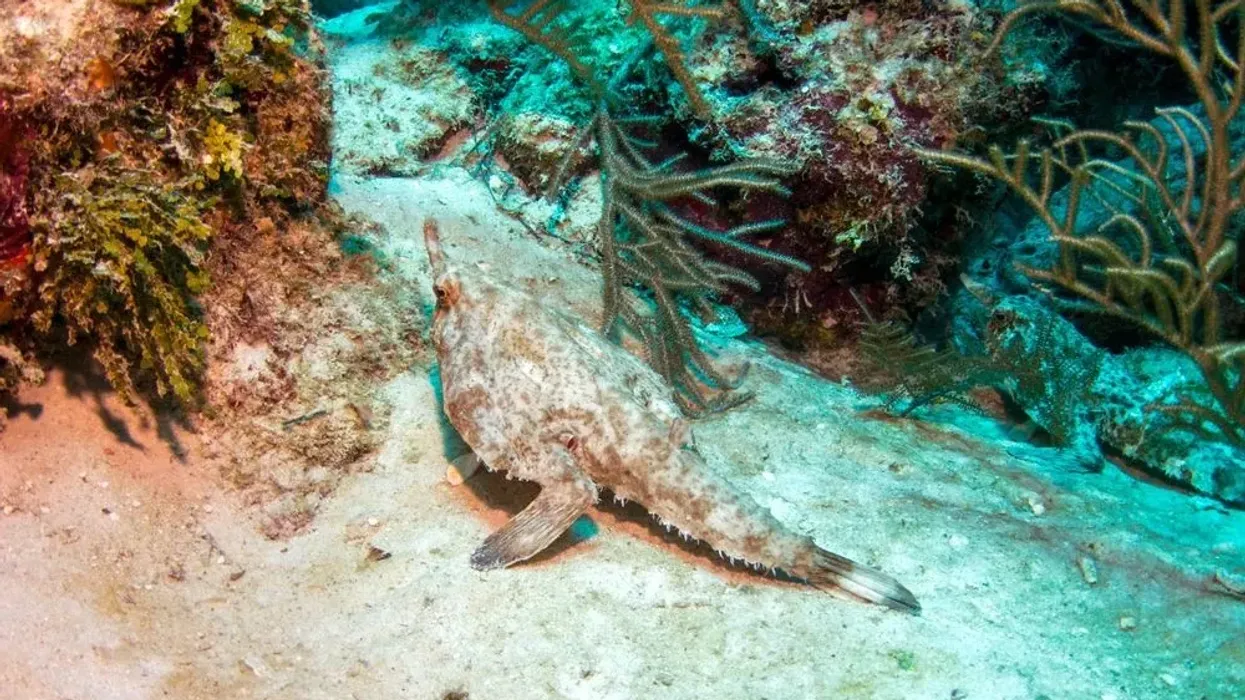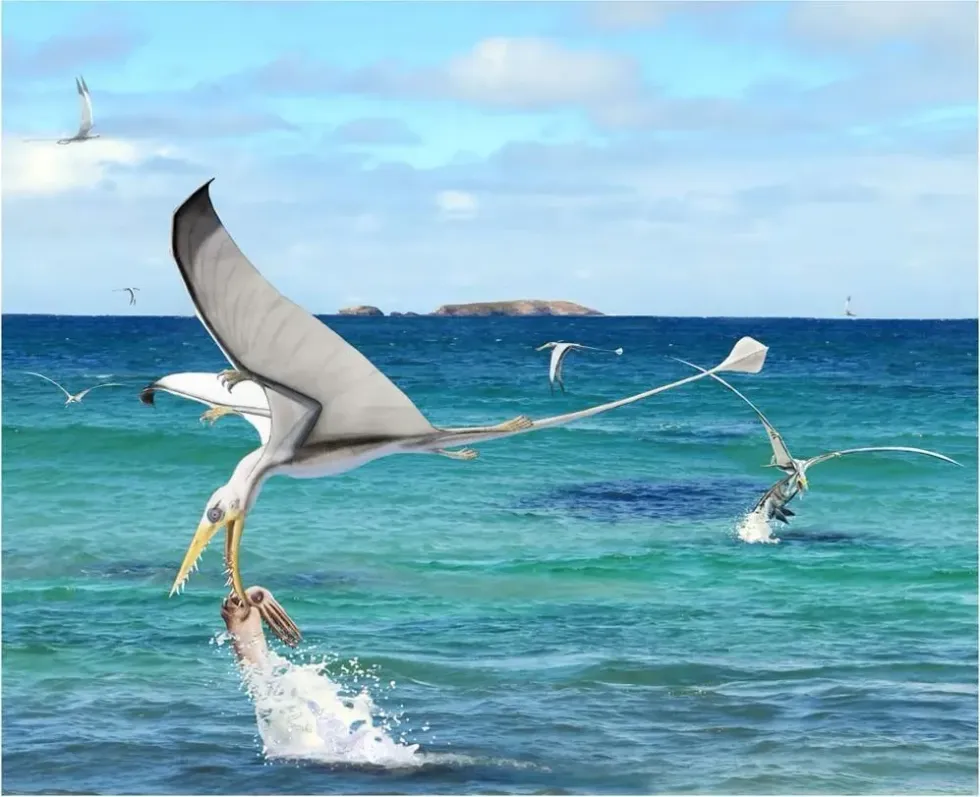In this article, we will learn about the spotted ratfish (Hydrolagus colliei). This fish belongs to the family Chimaeridae and lives in the north-eastern Pacific Ocean.
These fish are cartilaginous which implies that they have a skeletal system and these bony fish are named after their rat-like tail. This fish has white spots on its back that also inspire its name.
As for their scientific name Hydrolagus, this comes from a Greek word meaning 'water', and also honors Alexander Collie, who was a naturalist and ship surgeon.
This fish is a predator and its diet includes animals like crabs and clams. Despite being a predator, these bony fish are prey to many species like sharks, Pacific halibut, and pigeon guillemots among others.
While they are not part of any mainstream culinary culture, they are caught by the trawl method of catching fish.
Apart from their spotted back and tail, their dorsal fin and pectoral fin give them an intimidating and unique look. Their small stature should not be taken for granted as their bite force is the strongest among all members of their subclass Holocephali.
Read on to learn more about these fascinating animals. If you enjoyed reading this article, check out some facts about the neon goby and round goby.
Spotted Ratfish Interesting Facts
What type of animal is a spotted ratfish?
The spotted ratfish (Hydrolagus colliei) is a type of chimaera fish found in the northwestern Pacific Ocean. Chimaera is a group of cartilaginous fish that are often called by informal names like ghost sharks, ratfish, rabbitfish, and spook fish.
What class of animal does a spotted ratfish belong to?
These fish belong to the class Chondrichthyes. Furthermore, this fish belongs to the order Chimaeriformes, family Chimaeridae, and genus Hydrolagus.
How many spotted ratfishes are there in the world?
There are no reliable estimates of the spotted ratfish population. Considering that this fish has been listed as Least Concern by the IUCN (International Union for Conservation of Nature) Red List, it is safe to assume that their population is stable and is not close to extinction.
In fact, there are observations that suggest that their numbers are on the rise.
Where does a spotted ratfish live?
The preferred spotted ratfish habitat is the ocean. Its population is concentrated in the northwestern Pacific Ocean.
Their distribution is defined from the coast of Alaska to the coast of Baja California, including an isolated population in the Gulf of California. Their distribution is across varying depths ranging from right at the surface of the sea to about 3000 ft (914.4 m) deep.
That being said, they are most likely to be found 160-1,310 ft (48.8-399 m) deep below sea level.
In its nothern habitat, the spotted ratfish does not live in deep waters. Even off the coast of California, the depths at which these fish are found are only 100 ft (30.5 m) below sea level.
What is a spotted ratfish's habitat?
Spotted ratfish are found in a range of depths in the ocean, including on the ocean floor. The depths which they populate the sea become shallower during spring and fall, and deeper during summer and winter.
They prefer temperatures near 45-48 F (7.2-8.9 C). They live near the seafloor in rocky, sandy, or muddy reef environments. Compared to other species that it is related to, the spotted ratfish is not bound to just deep waters, they may even be found in an aquarium.
Who do spotted ratfishes live with?
Spotted ratfish tend to live close to each other, be it in shallow waters or near the ocean floor.
How long does a spotted ratfish live?
The lifespan of a spotted ratfish is not known.
How do they reproduce?
Much like sharks, spotted ratfish are oviparous which means that there is no embryonic development in the mother. The breeding or spawning season is during spring and fall.
The female releases about two fertilized eggs onto the sand on the ocean floor every 10-14 days. The egg cases have a leather-like look.
Their egg cases are about 5 in (12.7 cm) long. The process of releasing the egg itself takes over 18 hours and laying the egg takes another four to six days. The female remains invested in the safety of the egg by swimming and patroling to keep predators away.
This effort is rewarded after one grueling year of development of the egg when the young spotted ratfish hatch. Notably, the male spotted ratfish has many distinct sexual characteristics.
Some of these characteristics are their pelvic claspers (which come out of their pelvic fins), paired pelvic tentacula, and one frontal tentaculum. These sexual dimorphic characteristics assist in mating for the male, who is much smaller in size.
What is their conservation status?
According to the IUCN (International Union for Conservation of Nature) Red List, this species is listed as Least Concern. Despite this, accidental bycatch through the trawl method of fishing and many predators can hamper its conservation efforts.
Spotted Ratfish Fun Facts
What do spotted ratfish look like?
Their skin is smooth and they don't have many scales either. Their skin is silver to bronze in color, with shades of gold, blue and green.
They have distinct white spots on their back. Their caudal and dorsal fins are lined with darker colors while the outline on their pectoral fins is transparent.
Their pectoral fins are big and have a triangle shape much like those of a shark. They have a venomous spine that is at the base of their dorsal fin. Their small mouths have one pair of incisor-shaped teeth on the bottom jaw and two pairs of teeth on the upper jaw.
While a shark may lose its teeth forever, the teeth of the spotted ratfish are replaceable. Their upper jaw is fused to their skull, like many other species of bony fish.
Their large green eyes (which reflect light) and their fins give them an intimidating yet elegant appearance. Lastly, not to forget they have a rat-like tail that inspires their name: ratfish.

How cute are they?
While their fins and tail may seem cute to some, their resemblance to a shark disqualifies them from being called cute. In any case, you'd want to stay clear of their venomous spine even if you find them adorable to look at!
How do they communicate?
Like many other fish, the spotted ratfish relies on body movements and gestures to communicate with other members of its species.
How big is a spotted ratfish?
It must be noted that the male spotted ratfish is significantly smaller than its female counterpart. It can grow up to a length of 38 in (97 cm) and it is way bigger than a betta fish.
How fast can a spotted ratfish swim?
There is no known estimate of how fast the spotted ratfish can swim. These fish use their pectoral fin to swim in a manner that reminds some people of a bird!
How much does a spotted ratfish weigh?
The heaviest spotted ratfish that has been caught weighed about 3.9 lb (1.8 kg).
What are their male and female names of the species?
There are no unique names for female and male spotted ratfish.
What would you call a baby spotted ratfish?
A baby spotted ratfish is called a fry.
What do they eat?
The average spotted ratfish diet includes crunchy sea creatures like crabs and clams. They find their food near the seafloor using their sense of smell. As for its predators, the spotted ratfish species falls prey to soupfin sharks, pacific halibut, pinnipeds, and dogfish sharks among others.
Are they poisonous?
While their bite is not venomous, their venomous spine is located at the base of the leading edge of their dorsal fin. You do not have to worry too much about this if you are a diver though, because they use this only in defense.
In any case, it does not pose a serious threat but it can cause painful wounds. Even though they have venomous spines, the meat of the fish is edible.
Would they make a good pet?
While it is difficult to take care of them as an individual, spotted ratfish can be a common attraction in a public aquarium.
Did you know...
The eggs of spotted ratfish that are laid on the bed of the seafloor are often mistaken for inanimate objects by divers.
Different types of spotted ratfish
There are no known subspecies of spotted ratfish. The drastically different appearance of the male and female spotted ratfish means that they can often be mistaken for different subspecies, though.
Do spotted ratfish bite?
The bony spotted ratfish bites its prey with great force. For its defense mechanism, it uses its venomous spine, rather than biting.
Here at Kidadl, we have carefully created lots of interesting family-friendly animal facts for everyone to discover! For more relatable content, check out these lambchop rasbora facts and pigfish facts for kids.
You can even occupy yourself at home by coloring in one of our free printable spotted ratfish coloring pages.









